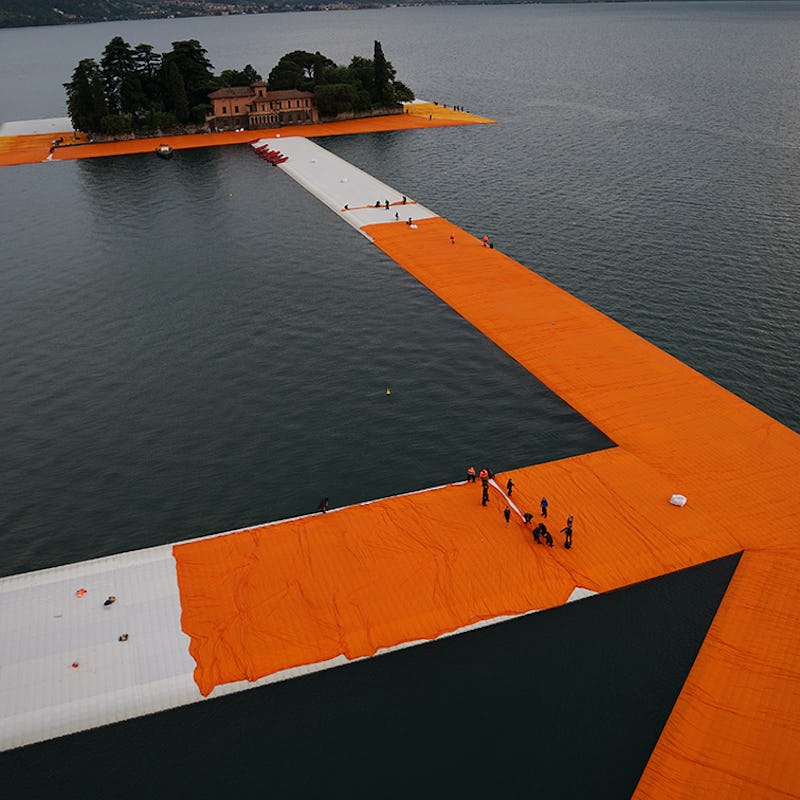Christo's "Floating Piers" Is a Breathtaking 2-Mile Work of Art on an Italian Lake
200,000 polyurethane cubes, miles of yellow cloth, and a truly spectacular view.

Christo, the legendary Bulgarian-American artist renowned for his massive, spectacular, environmental displays of color, has not put on an outdoor exhibition since 2005. His wife and artistic partner Jeanne-Claude died in 2009, ending decades of collaboration that molded environmental landscapes into visually stunning, enormous installations. After his partner’s death, there was only one thing left to do: walk on water.
“Floating Piers” is a concept that Christo’s had in his head for decades. He and Jeanne-Claude first envisioned the idea 46 years ago, and had tentative plans to install it in the Río de la Plata basin of South America, and the Tokyo Bay of Japan over the years, but neither project got off the ground (or into the water).
Part of the problem was the size. Christo and Jeanne-Claude don’t like to think small, and “Floating Piers” required an enormous amount of money, people, and resources to pull off. Enter lake Iseo, a small, relatively-unknown lake in northern Italy.
Once the town officials were on board, the real work began — manufacturing, shipping, and joining together over 200,000 polyurethane cubes into gigantic floating causeways, anchored to the lake bed and covered in saffron-colored cloth. The whole thing cost $16.8 million, and was funded by the sales of his more portable works of art.
YouTuber Fabrizio Sina has been making monthly videos chronicling the installation’s construction, using a drone to fly over the lake as the causeways went in — here’s his most recent update.
“It’s really a physical thing, you need to be there, walking it, on the streets, here. And it’s demanding,” Christo told the New York Times. And the project doesn’t stop at the lake’s shores — it extends through areas of towns on the mainland and Monte Isola, an island in the lake.
The project “is all this — the piers, the lake, the mountains,” he told the Times. “With the sun, the rain, the wind, it’s part of the physicality of the project, you have to live it.”
If you can’t afford to get to Italy in the next 16 days, before the installation closes, an Italian network has set up a livestream on YouTube to watch the saffron piers 24/7.
The boats on the side are part of an army of lifeguards and attendants who will be on hand in case anyone falls off the piers. They’re exposed to all the wind and rain of the region, and have no guard rails on the sides — but Christo says the movement of the water is part of the installation’s beauty. If you do manage to get to the lake, the installation is free, but the solid-booked hotels in the lake’s surrounding villages are not. And after it finishes, the whole thing will be broken up, recycled, or resold.
“The important part of this project is the temporary part, the nomadic quality,” Christo told the Times. “The work needs to be gone, because I do not own the work, no one does. This is why it is free.”
Still, 16 days with such an incredible work is better than nothing — and we’ll always have the drone footage.